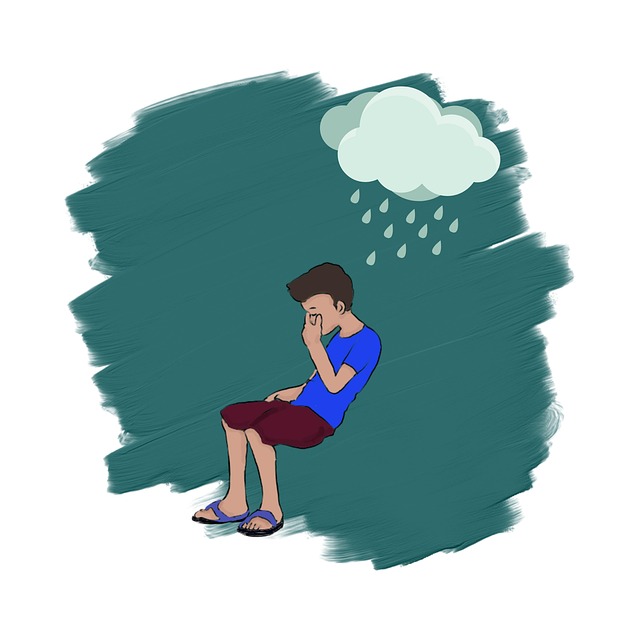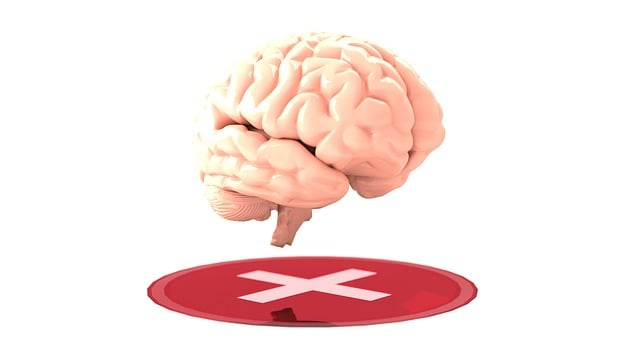Evaluating Aurora Autism Spectrum Disorder Therapy: Comprehensive Assessment Methods
Aurora Autism Spectrum Disorder (ASD) Therapy offers a holistic approach combining evidence-based pr…….
In the realm of healthcare, where every moment counts in a child’s development, Aurora Autism Spectrum Disorder (ASD) Therapy emerges as a beacon of hope for families worldwide. This innovative approach to treatment goes beyond traditional methods, offering a comprehensive and personalized journey towards enhancing social interactions, communication skills, and overall well-being for individuals on the autism spectrum. This article delves into the intricate world of Aurora ASD Therapy, exploring its various facets, global impact, and the transformative potential it holds for millions. Get ready to uncover how this therapy is revolutionizing support systems and shaping brighter futures.
Definition: Aurora ASD Therapy is a cutting-edge, evidence-based treatment designed specifically for individuals with autism spectrum disorders (ASD). It takes a holistic view of autism, recognizing that each person on the spectrum has unique strengths and challenges. This therapy aims to empower individuals to navigate their sensory world, improve social connections, and develop essential life skills.
Core Components:
Historical Context: The roots of Aurora ASD Therapy can be traced back to the 1960s and 70s when early interventions for autism focused on behavior modification. Over time, researchers and therapists evolved these methods into more nuanced approaches. The term ‘Aurora’ was inspired by the beauty and mystery of the northern lights, symbolizing the therapy’s aim to illuminate and enhance the unique light within each autistic individual.
Aurora ASD Therapy has captivated professionals and families worldwide, leading to its widespread adoption across diverse cultures and communities. Here’s a glimpse into its global impact:
International Adoption: Research indicates that countries in North America, Europe, and Australia have shown significant interest in Aurora ASD Therapy, with numerous specialized centers established. These regions have led the way in clinical trials and research, contributing to the therapy’s evolution.
Cultural Adaptation: As this therapy travels across borders, it undergoes cultural sensitivity adaptations to suit local needs. For instance, therapists in Asia are incorporating traditional healing practices while maintaining the core principles of Aurora ASD Therapy.
Growing Awareness: Global awareness campaigns have played a pivotal role in educating parents and caregivers about the benefits of early intervention. This has resulted in increased demand for specialized services, encouraging governments and private organizations to invest in Aurora ASD Therapy infrastructure.
| Region | Key Trends | Notable Developments |
|---|---|---|
| North America | Early adoption, robust research, and integrated healthcare systems | First comprehensive clinical trial results published, leading to insurance coverage expansion |
| Europe | Focus on community-based services, cultural adaptation | European Autism Network promotes Aurora ASD Therapy through regional conferences |
| Australia | Government funding initiatives, inclusive education focus | Success stories shared, influencing policy changes for autism support |
The economic implications of Aurora ASD Therapy are far-reaching, impacting healthcare systems, families, and society at large.
Market Dynamics: The global autism therapy market is experiencing rapid growth, projected to reach USD 47.3 billion by 2026 (Source: Global Market Insights). This surge is primarily driven by increasing awareness, rising autism diagnoses, and the demand for effective, personalized treatments like Aurora ASD Therapy.
Investment Patterns: Private equity firms and venture capitalists have shown a growing interest in autism-related startups, including technology solutions and therapy centers. This funding supports research, innovation, and the expansion of accessible services.
Cost-Effectiveness: Early intervention with Aurora ASD Therapy has been linked to significant long-term cost savings for healthcare systems. By addressing core challenges and improving outcomes, this therapy can reduce the need for intensive support services later in life.
Technology plays a pivotal role in enhancing Aurora ASD Therapy, making it more accessible and tailored to individual needs. Here are some notable advancements:
Virtual Reality (VR) Therapy: VR creates immersive environments, allowing individuals with autism to practice social scenarios in safe, controlled settings. This technology has shown promise in improving communication skills and reducing anxiety.
Mobile Applications: Numerous apps designed for autistic individuals offer visual aids, sensory tools, and communication supports. These apps provide accessible resources on the go, empowering users to manage their daily routines.
Data Analytics: Advanced analytics enable therapists to track progress, identify areas of improvement, and personalize treatment plans. This data-driven approach optimizes therapy outcomes.
Example: VR Social Skills Training
A study published in the Journal of Autism and Developmental Disorders (2021) demonstrated the effectiveness of VR social skills training. Participants with autism showed significant improvements in eye contact, conversation endurance, and social anxiety reduction after just 8 weeks of training.
Key policies and regulations play a crucial role in ensuring the ethical and accessible delivery of Aurora ASD Therapy:
Healthcare Regulations: Many countries have established guidelines for autism therapy, mandating evidence-based practices. These regulations ensure that therapists adhere to high standards, promoting effective treatment.
Insurance Coverage: Global trends show increasing insurance coverage for Aurora ASD Therapy, making it more financially accessible. This is a result of growing recognition by healthcare providers and insurers of the long-term benefits.
International Collaborations: Organizations like the World Health Organization (WHO) and Autism Speaks facilitate global collaborations, sharing best practices and research findings to enhance therapy standards worldwide.
Despite its promises, Aurora ASD Therapy faces several challenges that require thoughtful strategies for resolution:
Access and Availability: One of the primary concerns is ensuring equal access to this therapy, especially in underserved communities. Barriers include limited specialized centers, high costs, and a shortage of trained professionals.
Cultural Sensitivity: As therapy practices expand globally, cultural adaptations must be nuanced and respectful. Misunderstandings or insensitive approaches could lead to mistrust and reduced engagement.
Research Gaps: While research is progressing, there are still gaps in understanding the long-term outcomes of Aurora ASD Therapy. More longitudinal studies are needed to fully comprehend its impact on adult autism.
Strategic Solutions:
Let’s delve into a few inspiring case studies that highlight the power of Aurora ASD Therapy:
Case 1: Max’s Journey
Max, a young boy with high-functioning autism, struggled with social interactions and communication. Through Aurora ASD Therapy, he learned to express his feelings through art and developed better eye contact during conversations. His parents noted significant improvements in his ability to engage with peers, leading to increased participation in school activities.
Case 2: Emma’s Success Story
Emma, diagnosed with autism at 3 years old, faced sensory sensitivities that hindered her daily routines. With personalized therapy, she became more comfortable in various sensory environments. Her parents reported improved sleep patterns and better tolerance for different textures and sounds, enabling her to participate in age-appropriate activities.
Case 3: The Power of Family Involvement
The Johnson family’s experience exemplifies the impact of family-inclusive therapy. With a non-verbal autistic son, they learned strategies through Aurora ASD Therapy to support his communication needs. At home, they implemented visual schedules and sensory tools, leading to improved daily functioning and increased independence.
As we peer into the future of Aurora ASD Therapy, several growth areas and emerging trends come into focus:
Personalized Medicine: With advancements in genomics, therapists can tailor therapy plans based on individual genetic profiles, maximizing effectiveness.
Telehealth Services: The rise of telehealth allows remote therapy sessions, extending access to underserved regions. This trend is particularly promising for rural communities and families with limited mobility.
Integration with AI: Artificial Intelligence (AI) has the potential to revolutionize data collection and analysis in therapy. AI-driven tools can provide real-time feedback, personalize learning, and predict treatment outcomes.
Aurora Autism Spectrum Disorder Therapy represents a significant milestone in the global effort to support individuals with autism. Its holistic approach, backed by research and real-world success stories, positions it as a powerful tool for enhancing lives. As we navigate the future, continued investment, collaboration, and innovation will be key to ensuring that this therapy reaches those who need it most.
Q: How does Aurora ASD Therapy differ from traditional autism treatment?
A: Aurora ASD Therapy takes a more comprehensive and personalized approach, focusing on sensory integration, social skills development, and family involvement. It goes beyond behavior modification by fostering individual strengths and unique abilities.
Q: Is this therapy suitable for all individuals with autism?
A: While Aurora ASD Therapy is adaptable, it may not be appropriate for every person on the spectrum. Individual needs vary, and a thorough assessment by qualified professionals is essential to determine the best course of action.
Q: How can parents get involved in their child’s therapy?
A: Parents play a vital role by participating in therapy sessions, learning strategies at home, and maintaining open communication with therapists. They are empowered to continue the therapy journey alongside professionals.
Q: What is the long-term impact of Aurora ASD Therapy?
A: Studies show that early intervention can lead to improved social interactions, communication skills, and overall independence in adulthood. However, ongoing support and adaptation are necessary as individuals navigate different life stages.

Aurora Autism Spectrum Disorder (ASD) Therapy offers a holistic approach combining evidence-based pr…….

Emotional intelligence (EI) is a powerful tool for individuals with Aurora Autism Spectrum Disorder…….

Aurora Autism Spectrum Disorder Therapy (AASDT) offers a specialized risk management approach for me…….

Mental health challenges for individuals with Aurora Autism Spectrum Disorder (ASD) require tailored…….